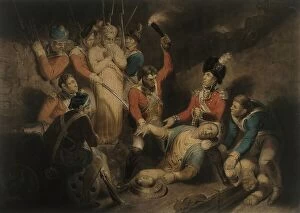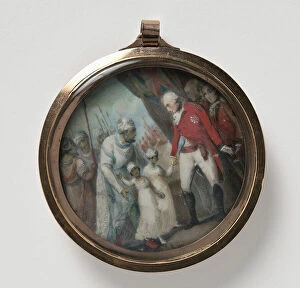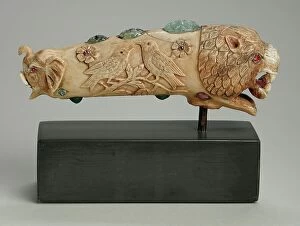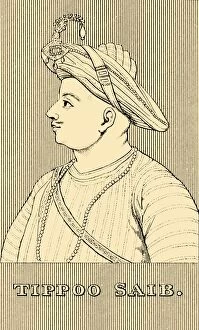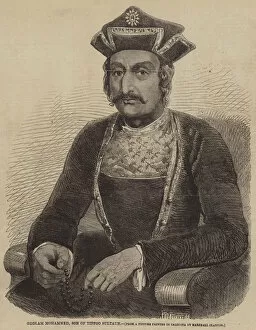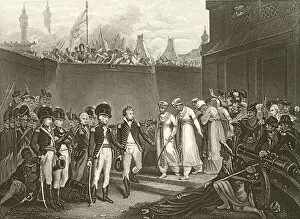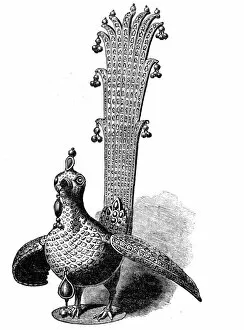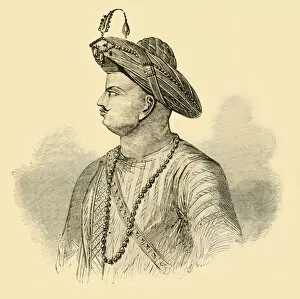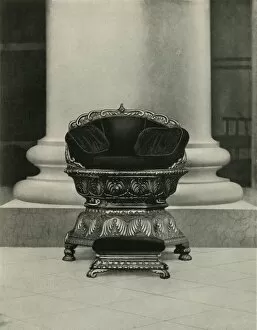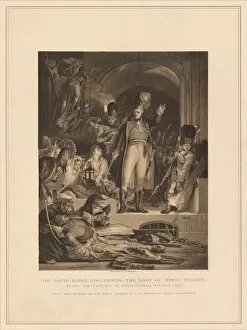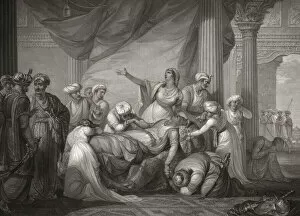Tippoo Sultaun Collection
Tippoo Sultaun, also known as Tippoo Saib, was a prominent figure in Indian history during the late 18th century
For sale as Licensed Images
Choose your image, Select your licence and Download the media
Tippoo Sultaun, also known as Tippoo Saib, was a prominent figure in Indian history during the late 18th century. Born in 1750, he ruled as the Sultan of Mysore until his death in 1799. Despite being an enigmatic character, his legacy is captured through various artistic depictions. One such portrayal is an 1830 painting by an unknown artist. The artwork showcases his regal presence and dignified demeanor, giving us a glimpse into the life of this influential ruler. Another image from around 1891 shows him at the Lines of Travancore, possibly indicating his military prowess and strategic acumen. The engraving of Gholam Mohammed, Tippoo's son, offers insight into their familial bond and highlights the importance placed on lineage during that era. Similarly, another engraving depicts the surrender of two sons after a significant event or battle. Moving away from political imagery, we see glimpses into Tippoo Sultaun's opulent lifestyle with images like "The Grand Buffet" held at St. Georges Hall in 1844 and "Tippo Saibs peacock" created around the same time period. These artworks showcase his appreciation for grandeur and luxury. In contrast to these lavish depictions are historical moments captured through artistry like Lord Cornwallis receiving Tippoo Saib's sons in the late 1780s or Sir David Baird discovering Tippoo Sultaun's body after his demise in 1799. These somber scenes remind us that behind all power lies vulnerability and mortality. Lastly, we have photographs taken much later - one showing State Seat of Tipu Sultan in Government House dating back to 1925 while another portrays Tipu Sultan's family grieving over his body after he fell during the siege of Srirangapatna in 1799.

